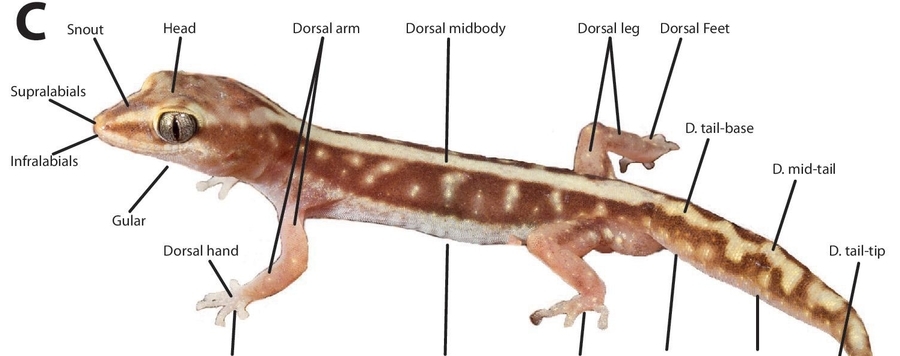
Variation in density, but not morphology, of cutaneous sensilla among body regions in nine species of Australian geckos
Skin sense organs, i.e., cutaneous sensilla, are a well-known feature of the integument of squamate reptiles, and particularly geckos. They vary widely in morphology among species, and are thought to be mechanosensitive, associated with prey capture and handling, tail autotomy, and placement of the adhesive toepads in pad-bearing species. Some authors suggest that they may also sense abiotic environmental features, such as temperature, or humidity. Here, we describe the morphology and distribution of cutaneous sensilla among body regions of nine Australian gecko species, in four genera. We hypothesised that if sensilla morphology was distinct, or sensilla density high, around the mouth, on the tail, and on extremities, sensilla were likely used for these direct tactile functions. We found that sensilla morphology was uniform among body regions within species, but varied among species, while sensilla densities varied among species and body regions. In gecko species studied, sensilla density was highest on the labials and the dorsal tail scales, and low on the feet, head and body, providing strong support for the hypothesis that sensilla serve tactile mechanoreceptive functions for prey capture and handling and for predator avoidance, but not for toepad placement. We suggest sensilla density may be explained by mechanoreception, whereas structure may be influenced by other factors.






